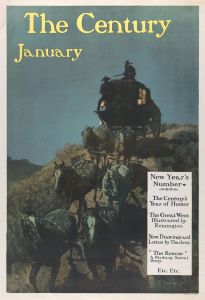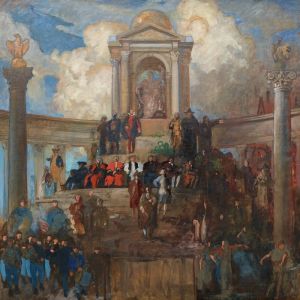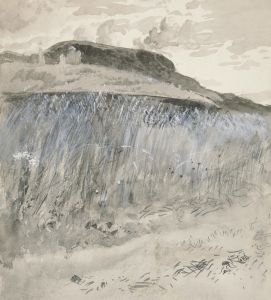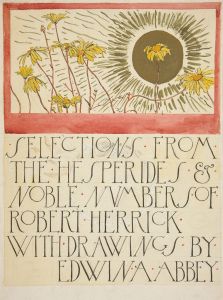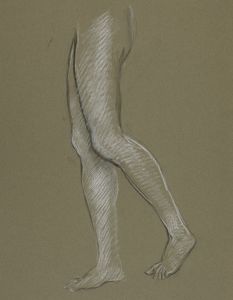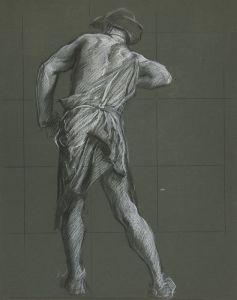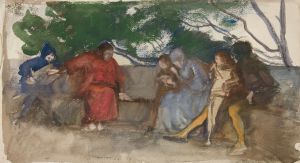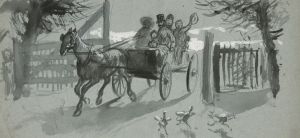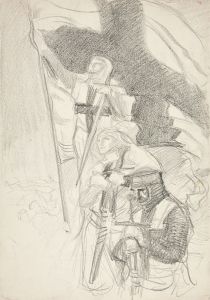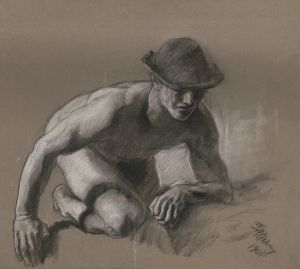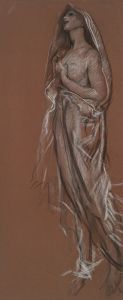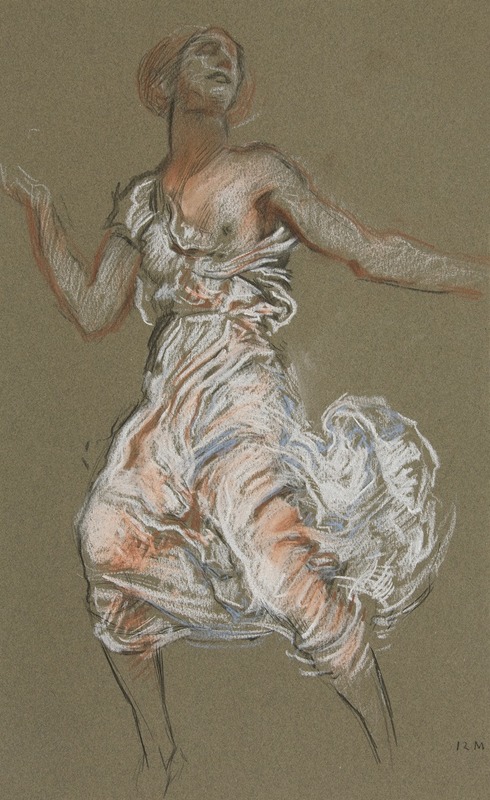
Study for the figure of 12 noon in ‘The Hours’ ceiling mural, House Chamber, Pennsylvania State Capitol at Harrisburg
A hand-painted replica of Edwin Austin Abbey’s masterpiece Study for the figure of 12 noon in ‘The Hours’ ceiling mural, House Chamber, Pennsylvania State Capitol at Harrisburg, meticulously crafted by professional artists to capture the true essence of the original. Each piece is created with museum-quality canvas and rare mineral pigments, carefully painted by experienced artists with delicate brushstrokes and rich, layered colors to perfectly recreate the texture of the original artwork. Unlike machine-printed reproductions, this hand-painted version brings the painting to life, infused with the artist’s emotions and skill in every stroke. Whether for personal collection or home decoration, it instantly elevates the artistic atmosphere of any space.
Edwin Austin Abbey, an American muralist and illustrator, is renowned for his significant contributions to public art in the United States, particularly his work in the Pennsylvania State Capitol at Harrisburg. Among his notable creations is the "Study for the figure of 12 noon in ‘The Hours’ ceiling mural," which is part of a larger series of murals adorning the House Chamber of the Capitol.
Abbey was commissioned to create a series of murals for the Pennsylvania State Capitol in the early 20th century, a project that was part of a broader effort to embellish the building with art that reflected the cultural and historical values of the state. The Capitol itself, designed by architect Joseph Huston, is a masterpiece of Beaux-Arts architecture and was completed in 1906. Abbey's murals were intended to complement the grandeur and symbolic nature of the building.
"The Hours" is a ceiling mural that depicts the passage of time throughout a single day, with each hour personified by a different figure. The figure representing 12 noon is a central element of this composition, symbolizing the peak of the day. Abbey's approach to this figure, as with the others in the series, reflects his deep understanding of allegorical representation and his ability to convey complex themes through art.
Abbey's work on the Capitol murals was characterized by meticulous attention to detail and a commitment to historical accuracy, which was a hallmark of his style. His training and experience in both the United States and Europe, particularly his time spent in England, influenced his artistic approach, blending American themes with European techniques.
The "Study for the figure of 12 noon" showcases Abbey's preparatory process, where he would create detailed sketches and studies before executing the final mural. These studies are valuable in understanding his artistic process and the evolution of his ideas from concept to completion. They provide insight into his use of color, composition, and symbolism, which are evident in the final mural.
Abbey's murals in the Pennsylvania State Capitol have been praised for their artistic merit and their ability to enhance the architectural space they inhabit. They serve not only as decorative elements but also as narrative devices that communicate themes of time, governance, and the human experience.
Unfortunately, Abbey did not live to see the completion of all his planned works for the Capitol, as he passed away in 1911. However, his contributions remain a significant part of the building's artistic legacy. The "Study for the figure of 12 noon" and the completed murals continue to be appreciated by visitors and art historians alike, who recognize Abbey's role in shaping American muralism and his impact on public art in civic spaces.





